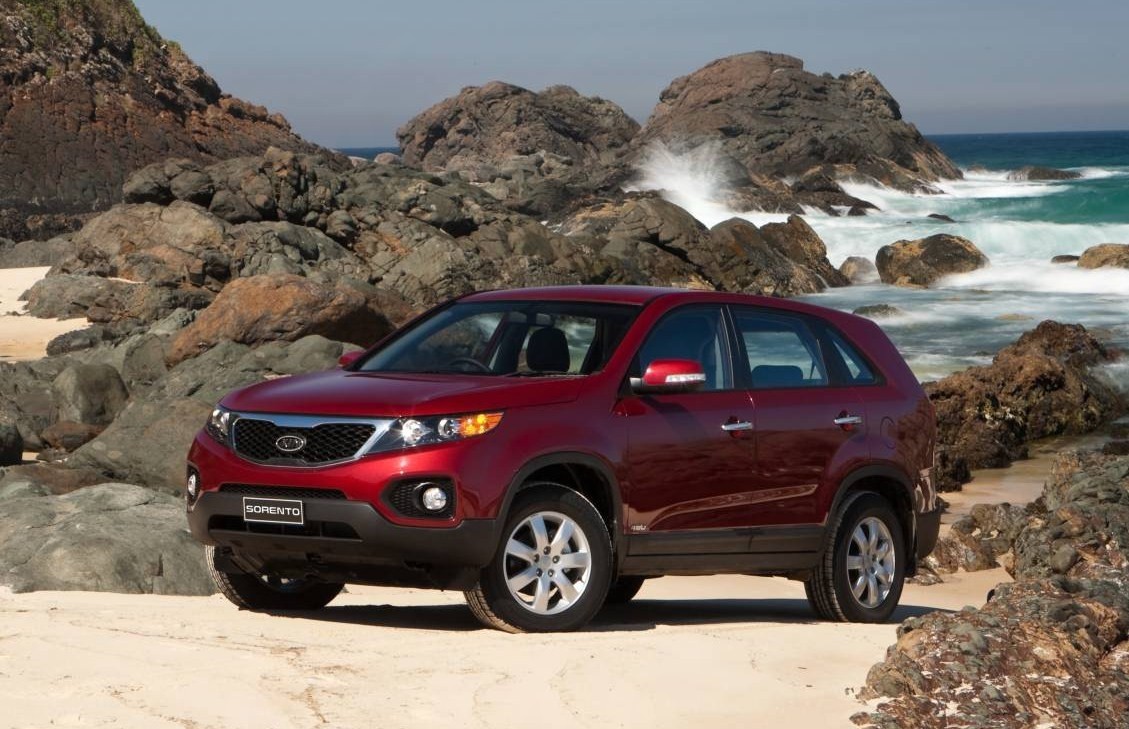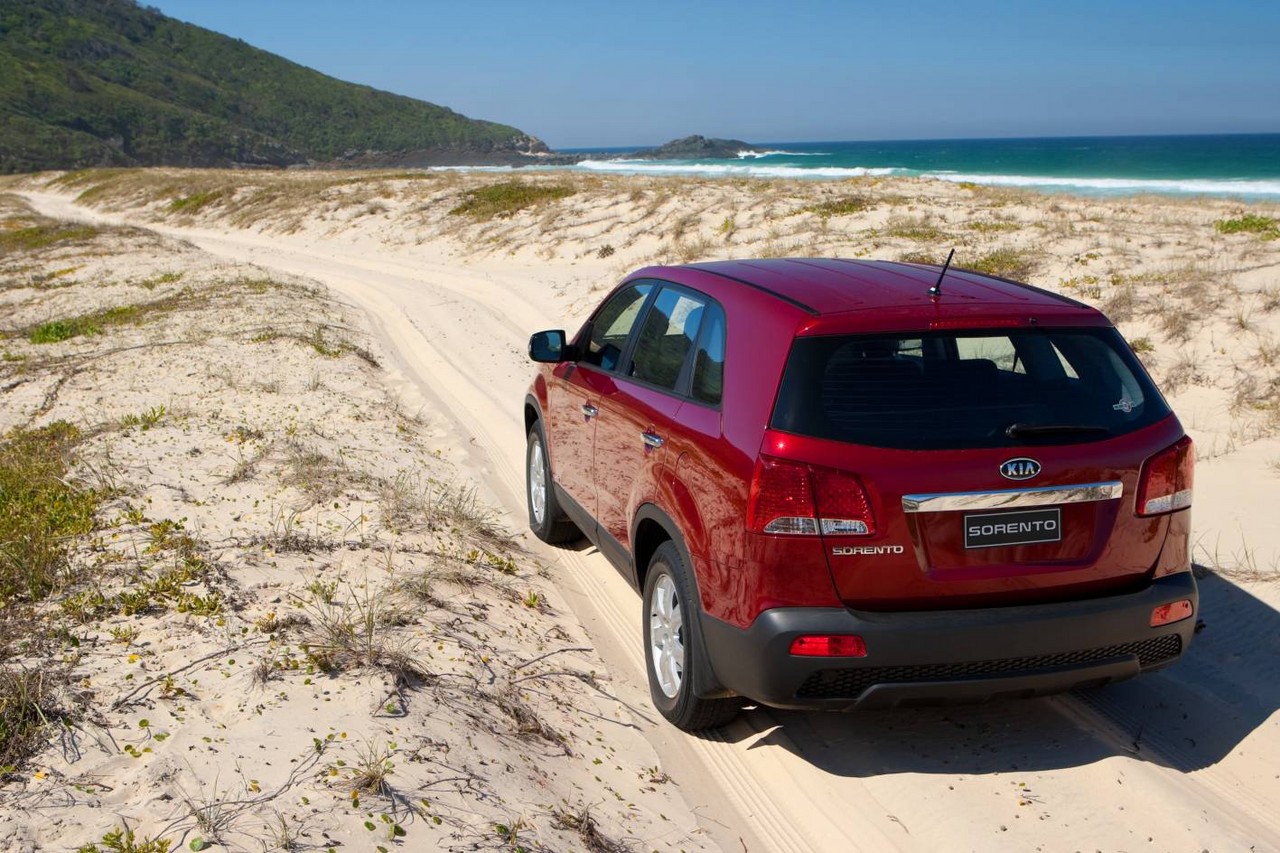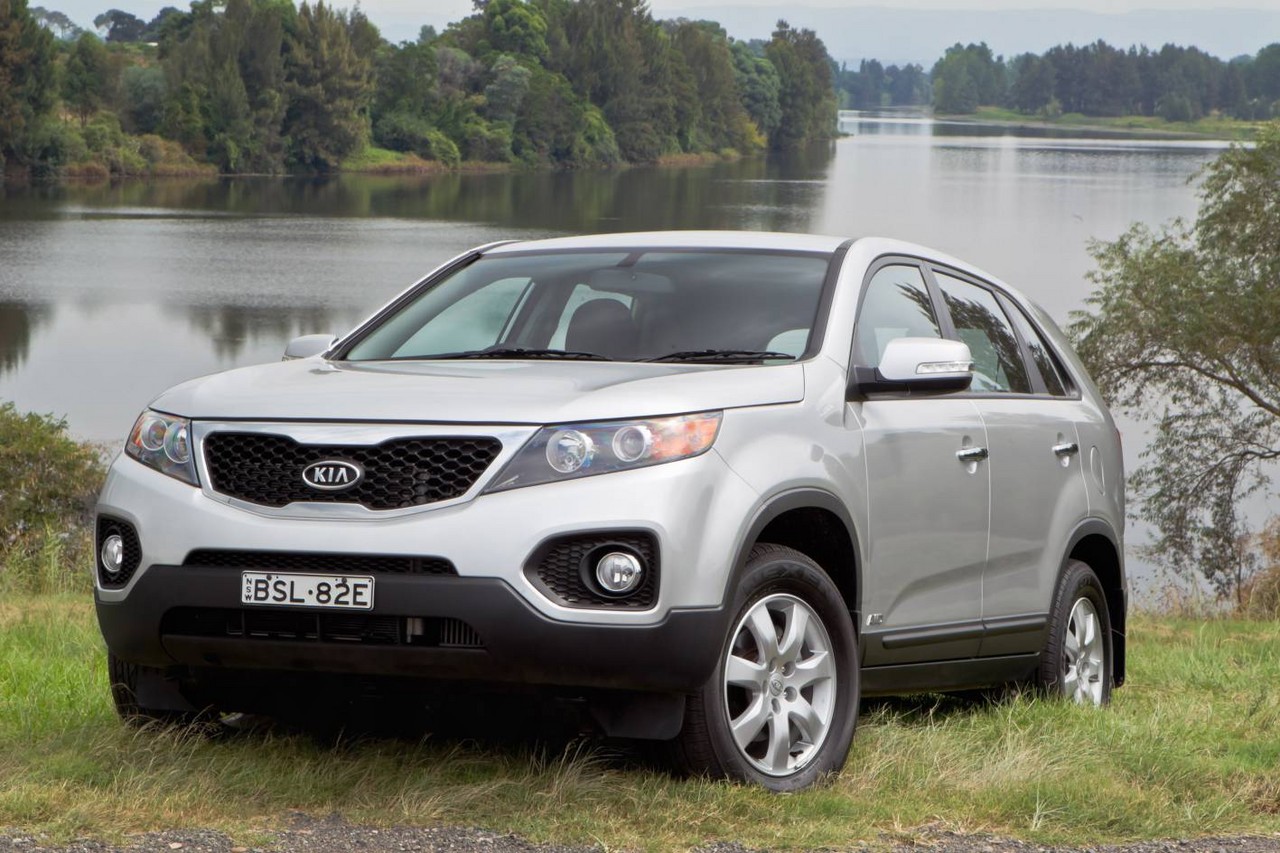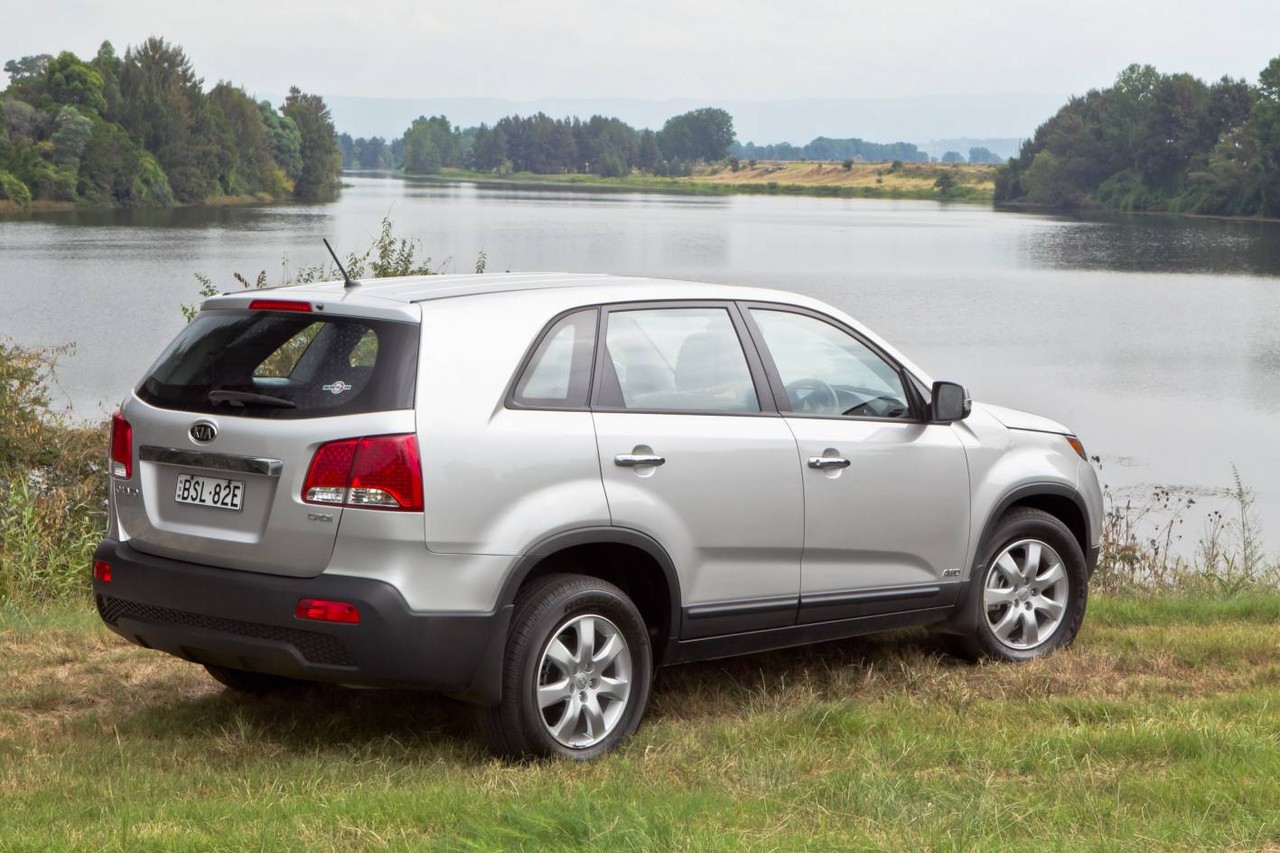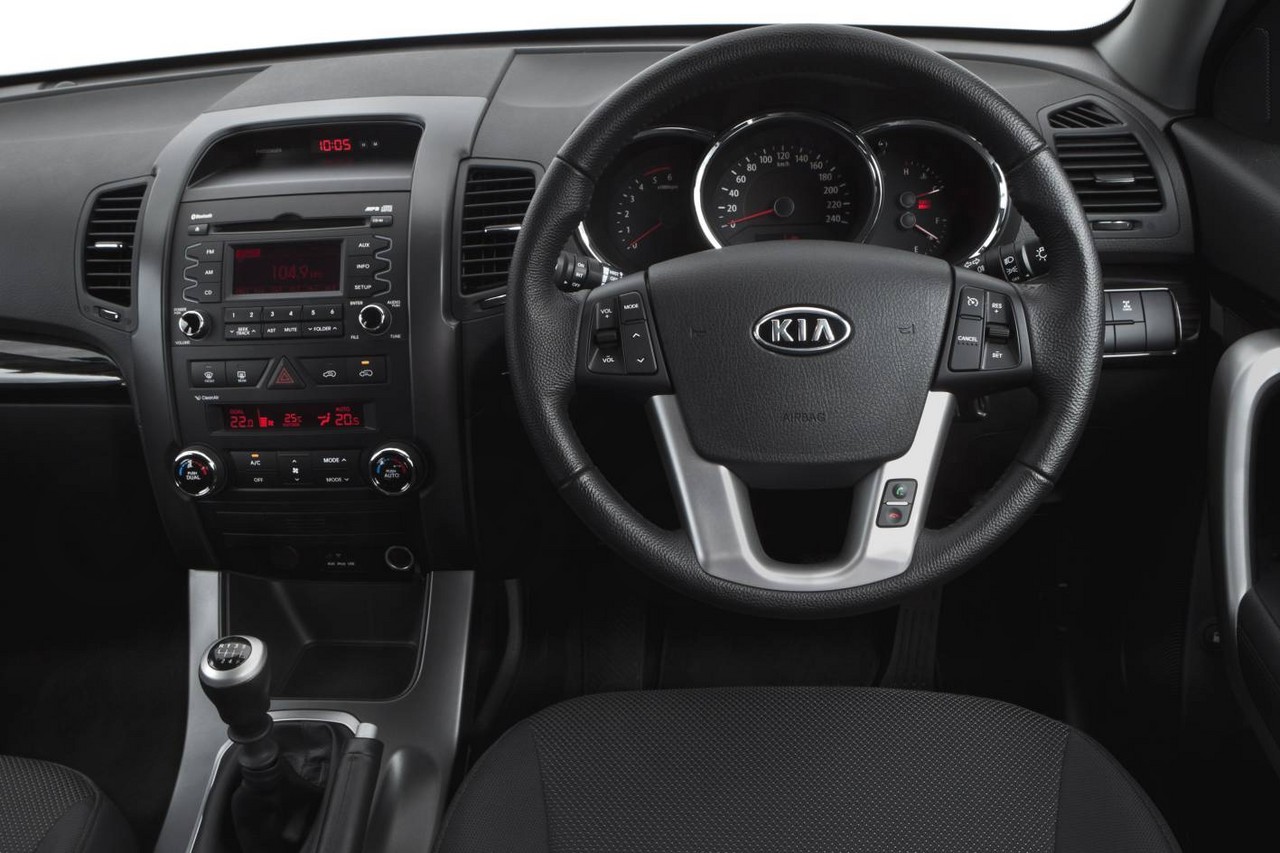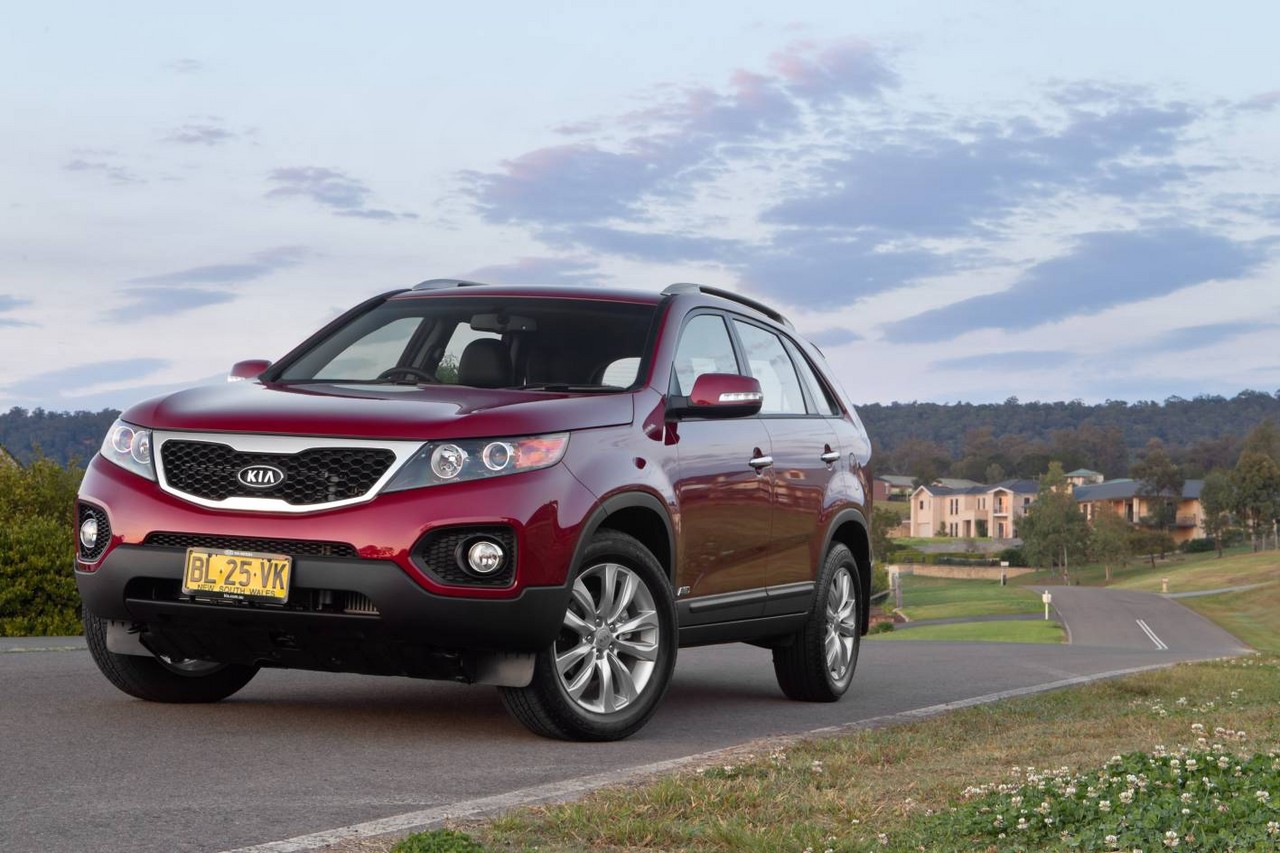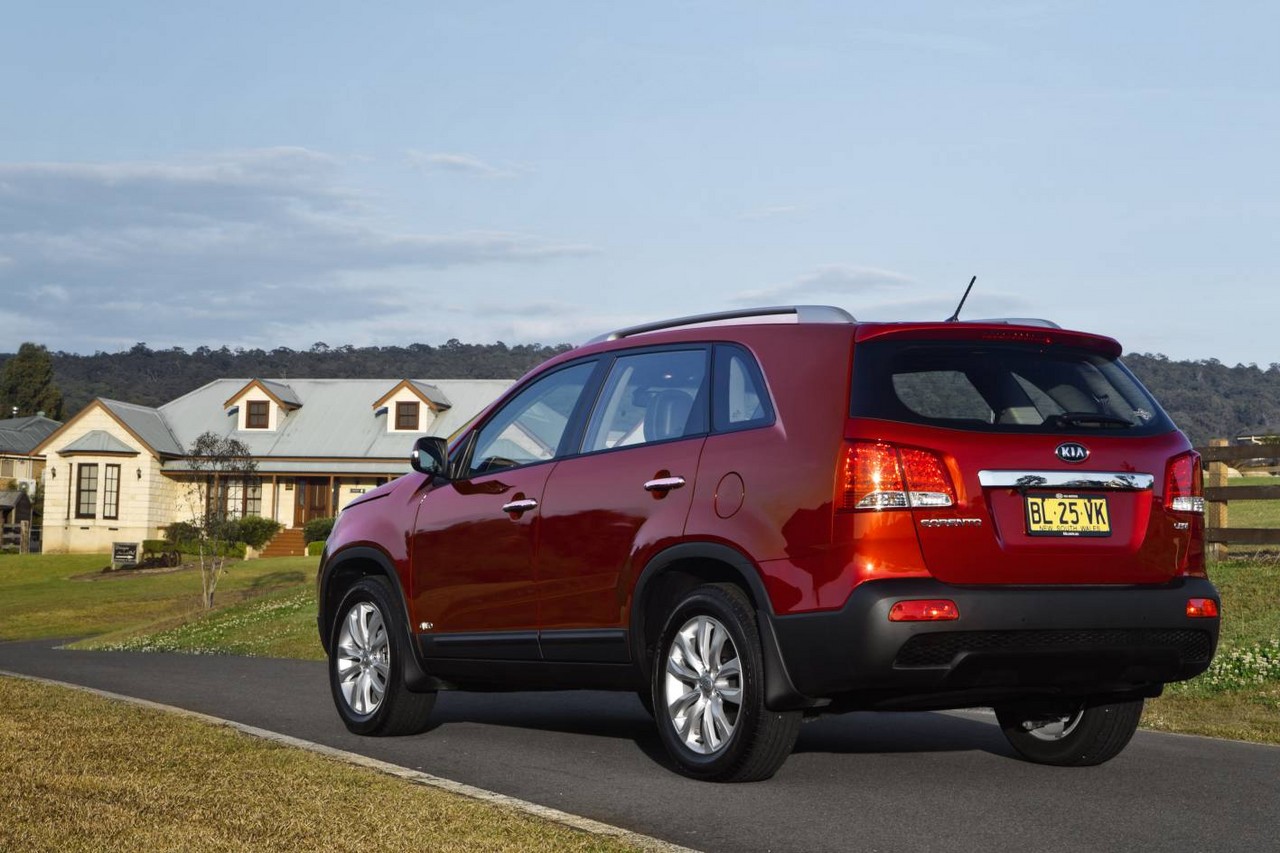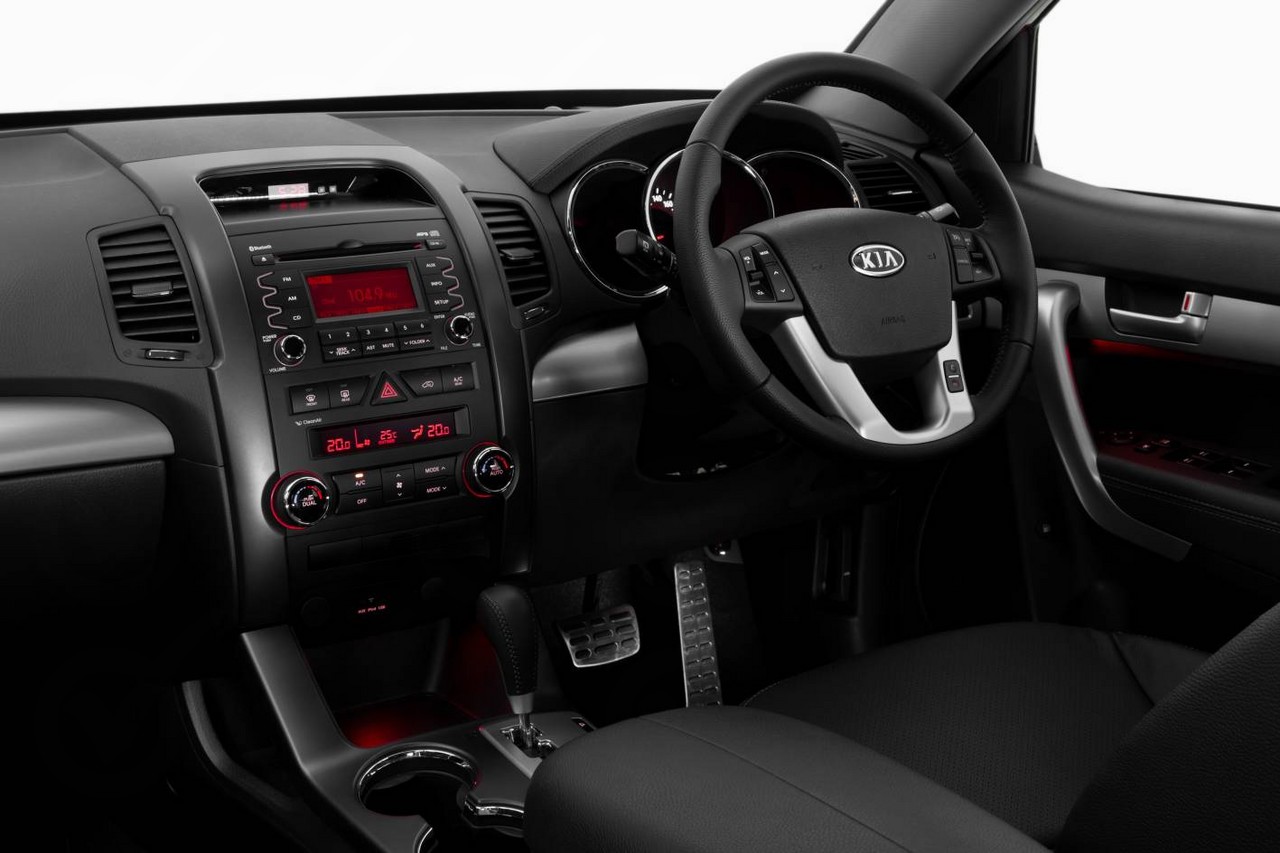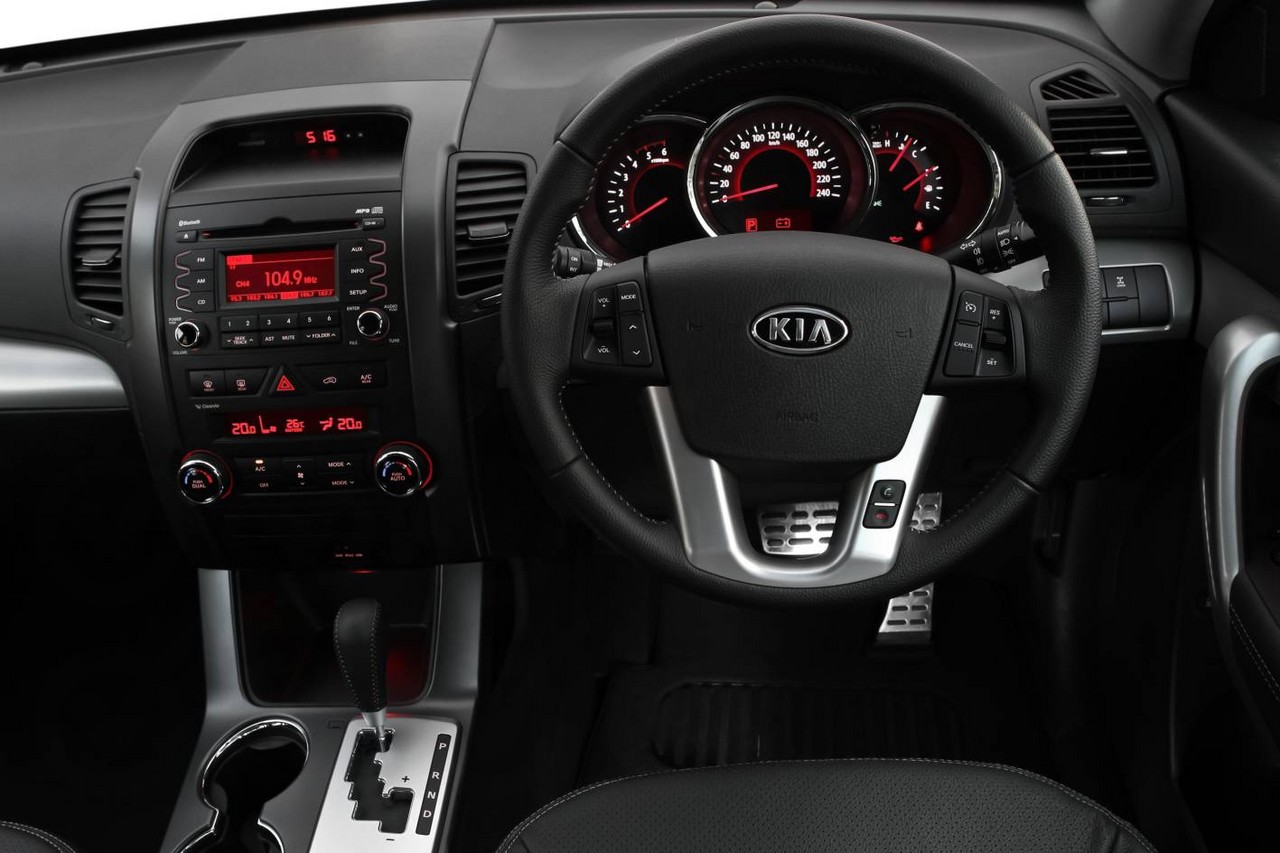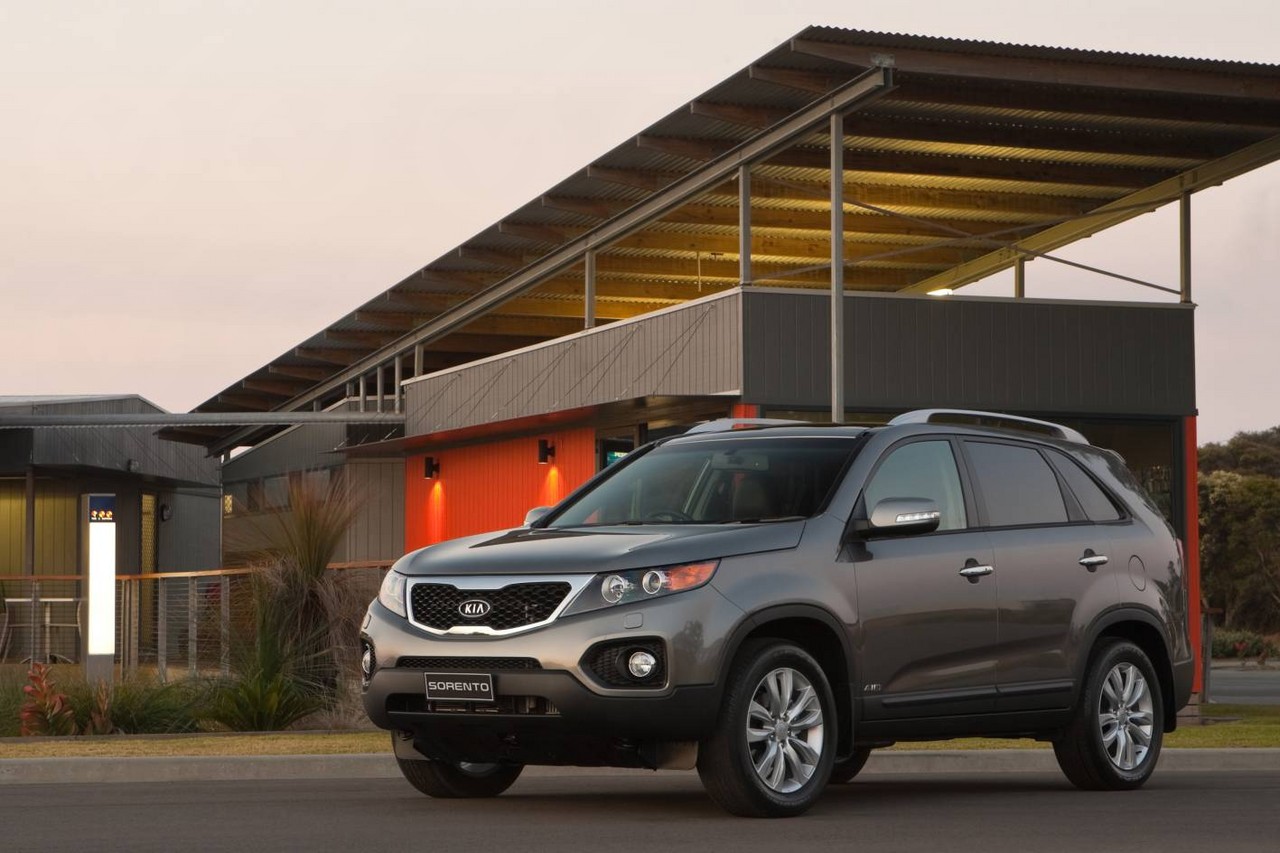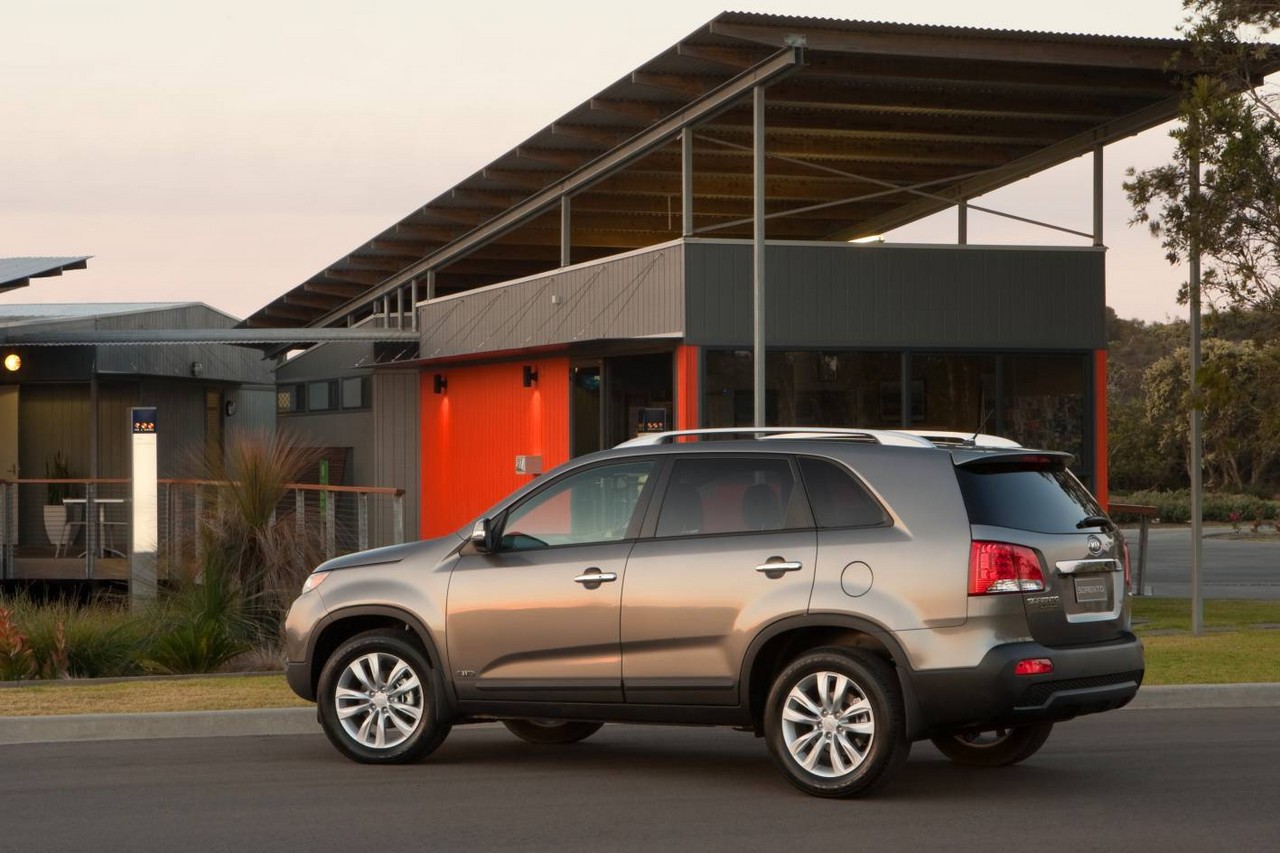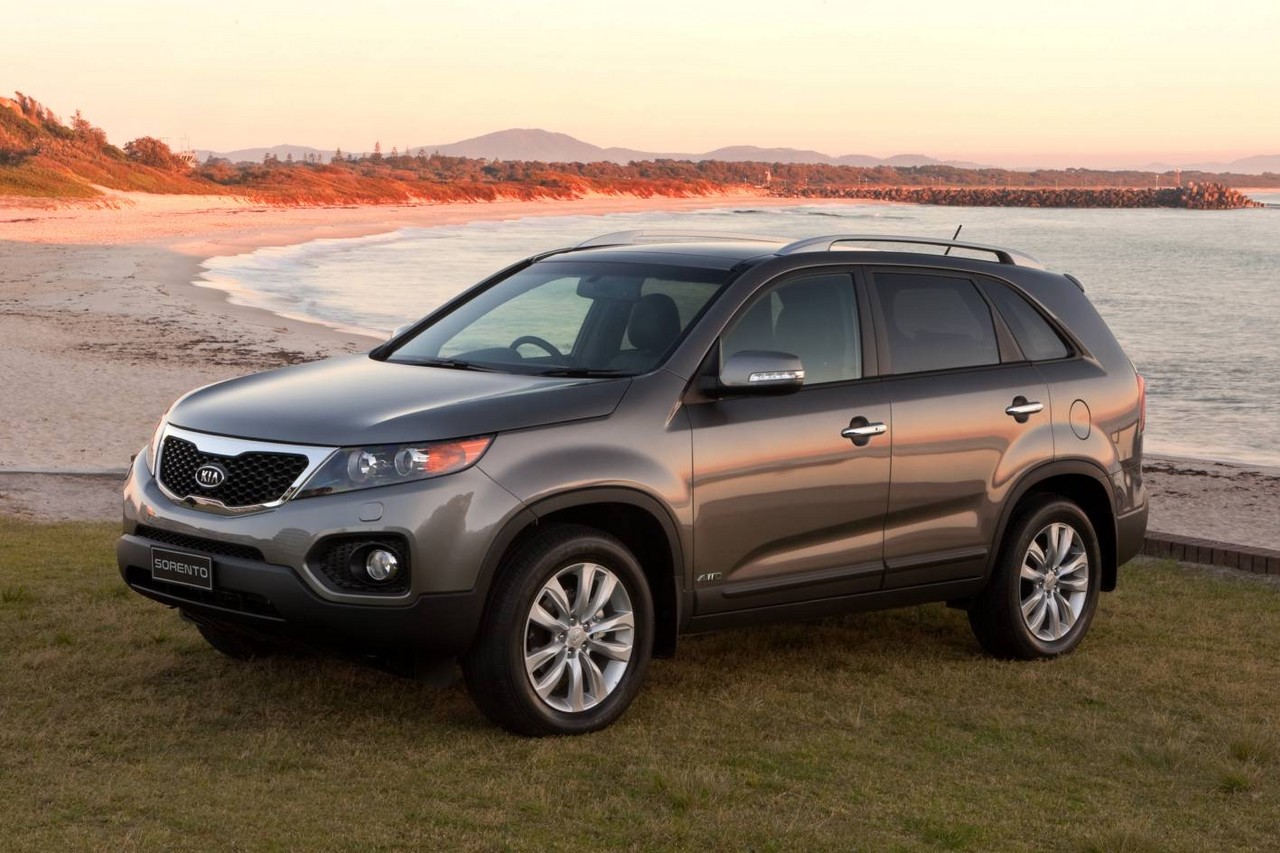
- Responsive 2.2-litre turbo-diesel engine
- Spacious interior
- Suspension lacks compliance
- Hard interior plastics
- 3.5-litre V6 petrol engine can be thirsty
- Underpowered 2.4-litre petrol engine
- Spongy brake pedal feel
Overview
Released in October 2009, the Kia XM Sorento was a large, seven-seat SUV. Manufactured in Hwasung, South Korea, the XM Sorento was initially available with 2.4-litre four-cylinder petrol and 2.2-litre turbo-diesel engine. Of these, the petrol models were fitted with automatic transmissions and were front-wheel drive, while the all-wheel drive turbo-diesel models were also available with manual transmissions. In August 2011, the range was expanded with the introduction of 3.5-litre V6 petrol engines – these models were front-wheel drive and solely available with automatic transmissions.
G4KG and G6DC petrol and D4HB diesel engines
Of the engines,
- the 2.4-litre G4KG ‘Theta II’ petrol engine had an aluminium cylinder block and head, double overhead camshaft, four valves per cylinder, continuously variable intake and exhaust valve timing (D-CVVT), a variable intake system and a compression ratio of 10.5:1;
- the 3.5-litre G6DC ‘Lambda II’ V6 petrol engine had an aluminium block and cylinder heads, double overhead camshafts, four valves per cylinder, variable intake and exhaust valve timing (D-CVVT), a variable intake system and compression ratio of 10.6:1; and,
- the 2.2-litre D4HB ‘R’ diesel engine had an aluminium engine block and cylinder head, common-rail direct injection with piezo injectors (operating at 1800 bar), a variable geometry Garrett GTB1752VLK turbocharger, double overhead camshafts, four valves per cylinder and a compression ratio of 16.0:1.
Development and dimensions
Unlike its BL Sorento predecessor, the XM Sorento had a monocoque chassis rather than a ladder-frame structure. Furthermore, the percentage of high-tensile steel also increased from 40.0 per cent to 70.4 per cent, contributing to a much stiffer structure. Compared to its predecessor, the XM Sorento was 120 mm longer (at 4685 mm), 20 mm wider (1885 mm), 15 mm lower (1710 mm) and had a 10 mm shorter wheelbase (2700 mm). Despite the shorter wheelbase, the A-pillars were moved forward and the tailgate moved rearwards for increased interior space.
Suspension
The XM Sorento had fitted with MacPherson strut front suspension and multi-link rear suspension (both with coil springs, gas-filled dampers and anti-roll bars).
| Engine | Drive | Years | Variant | Trans. | Peak power | Peak torque |
|---|---|---|---|---|---|---|
| 2.4-litre petrol I4 | FWD | 2009-12 | Si | 6sp auto | 128 kW at 6000 rpm | 226 Nm at 3750 rpm |
| 2.2-litre turbo-diesel I4 | AWD | 2009-12 | Si | 6sp man. | 145 kW at 3800 rpm | 422 Nm at 1800-2500 rpm |
| Si, SLi, Platinum |
6sp auto | 145 kW at 3800 rpm | 436 Nm at 1800-2500 rpm | |||
| 3.5-litre petrol V6 | FWD | 2011-12 | Si | 6sp auto | 204 kW at 6300 rpm | 335 Nm at 5000 rpm |
AWD system
The 2.2-litre turbo-diesel Sorento models were fitted with an all-wheel drive system which, in normal conditions, directed the engine’s torque to the front wheels. In the event that the front wheels experienced slippage, up to 50 per cent of the engine’s torque could be directed to the rear axle (i.e. a 50:50 front:rear torque split). The Sorento’s all-wheel drive system also had a ‘lock’ mode which provided a fixed 50:50 front:rear torque distribution for speeds up to 40 km/h.
Safety equipment
Standard safety equipment for the XM Sorento included dual front airbags, front side airbags, full-length curtain airbags, ABS, electronic brake force distribution, brake assist, electronic stability control, traction control, downhill brake control, hill start assist, active front seat head restraints and front seatbelts with double pretensioners and load limiters.
Euro NCAP crash testing
In Euro NCAP testing , a five-seat XM Sorento with a 2.2-litre turbo-diesel engine received a five star safety rating which included an 87 per cent adult occupant protection rating and an 84 per cent child occupant protection rating. In the frontal offset impact test, the steering column and ignition barrel presented a potential injury risk to drivers of different sizes; in the pole test, rib deflections indicated marginal protection of the chest. Under ANCAP’s methodology , this testing resulted in a five star adult occupant protection rating with a score of 33.21 out of 37.
Features: Sorento Si, SLi and Platinum
Standard features for the entry-level Sorento Si included 17-inch alloy wheels, a six speaker sound system with CD player, MP3-compatibility and auxiliary inputs (3.5 mm/USB/iPod), dual-zone climate control air conditioning, cruise control, front fog lights, a leather-wrapped steering wheel and gear shift, 60/40 split and flat folding second row seats, 50/50 split and flat folding third row seats, remote central locking, power windows and folding mirrors, a height and reach adjustable steering wheel, height adjustable driver’s seat, tinted windows, a trip computer and an immobiliser.
The Sorento SLi added 18-inch alloy wheels, leather seats, a reversing camera, rear parking sensors, an eight-way power adjustable driver’s seat, third row air conditioning vents, height and reach adjustable steering wheel, electrochromatic rear view mirror, roof rails, rear spoiler and LED tail-lights.
Finally, the Sorento Platinum was also fitted with an upgraded sound system with external amplifier, centre speaker, subwoofer and six-stack CD player, high intensity discharge (HID) headlights, a power sunroof and dark-tinted rear privacy glass.
November 2010: Sorento update
From November 2010, Bluetooth mobile phone connectivity (with steering wheel controls) and ‘headlamp escort’ (i.e. delayed automatic shut-off) headlights were standard across the range. The SLi and Platinum variants were also fitted with a higher resolution rear view camera with parking guidelines and a leather-wrapped instrument cluster housing.
March 2012: satellite navigation for Platinum variants
From March 2012, the Platinum variants were fitted with an integrated satellite navigation system with a full-colour 6.5-inch LG touch-screen and SUNA live traffic notifications; the upgrade also included Bluetooth audio streaming and mobile phone connectivity, full USB/iPod compatibility and a large-format display for the (existing) reversing camera. For the navigation system, Navteq map updates were provided free of charge 12 and 24 months after purchase.
2012 Sorento Global Circuit editions
In August 2012, limited-run Global Circuit editions of the turbo-diesel SLi and Platinum variants were released; these Global Circuit editions were fitted with side steps, an alloy nudge bar, a towbar with wiring and tongue protector, a cargo protector, carpet mat set, roof rails, crossbars and ‘Global Circuit’ badges.
Related links
